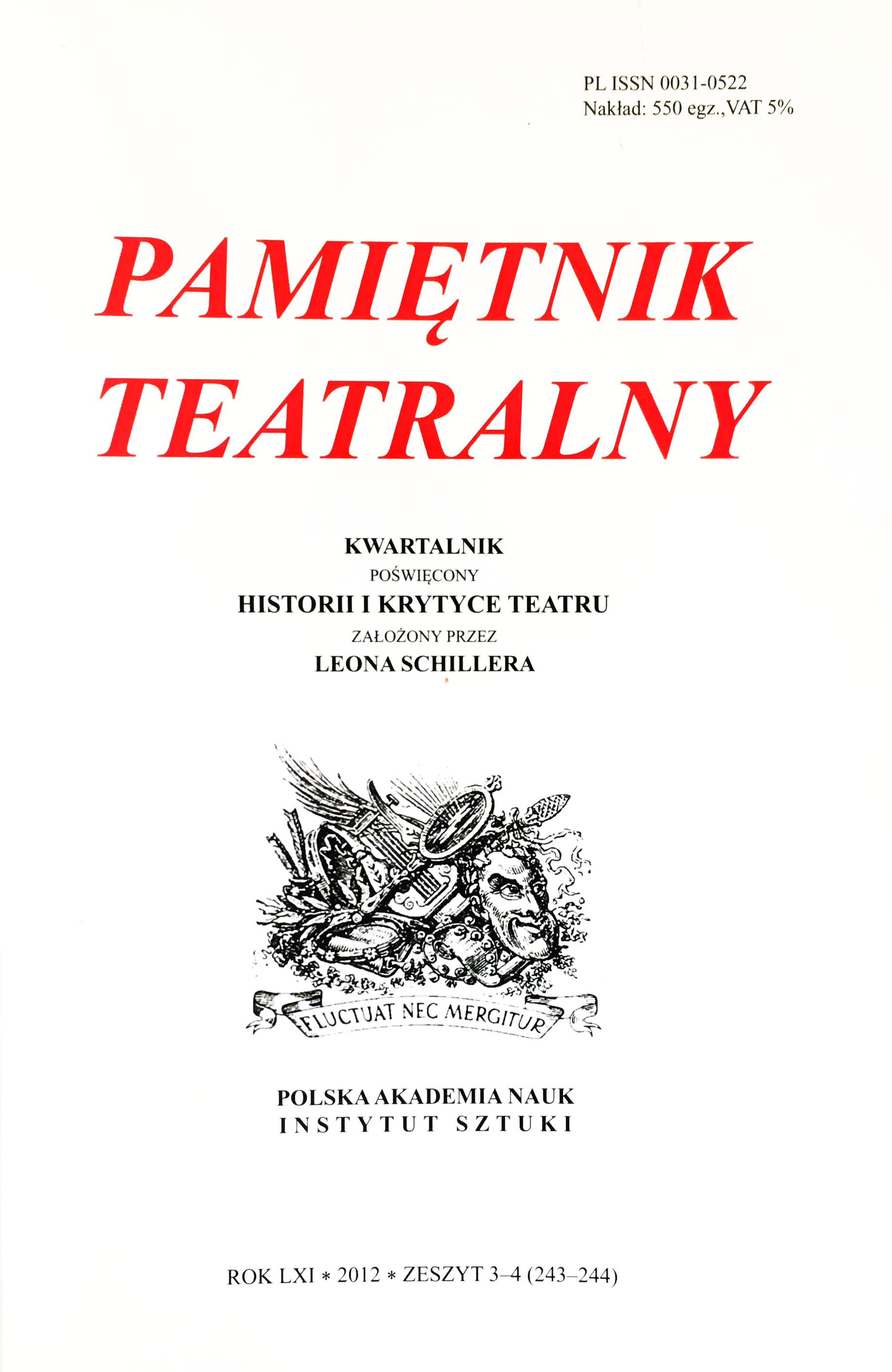Między słowem a formą
Beetween the Word and the Form
On Two Theatres of the Wartime Underground
Author(s): Katarzyna Flader-RzeszowskaSubject(s): Theatre, Dance, Performing Arts
Published by: Instytut Sztuki Polskiej Akademii Nauk
Keywords: Tadeusz Kantor;Polish theatre;theatre history;theatre during WWII;Poland during WWII;wartime conditions;
Summary/Abstract: During the Second World War, the occupied Cracow saw the emergence of two theatres, the Rapsodyczny Theatre of Mieczysław Kotlarczyk and the Niezależny Theatre of Tadeusz Kantor. The two differed almost in everything. They differed in their approach to literary text as well as in acting methods, stage design concepts and their founders’ philosophical outlooks. Even though both of the Cracow artists had chosen to stage plays by Juliusz Słowacki, each of them used the Romantic works quite differently. To Kotlarczyk, it was the literary text that was of paramount importance, and thus the word had become the major means of theatrical expression. Synchronised with music, it revealed its full richness and meaning. The production of Król Duch devoid of any stage setting or costumes, and using only a limited number of props, was meant to induce the audience to use their imagination and focus on the poem’s content. For Kantor, the text was just one of many elements composing the theatre performance. The artist had rejected the logocentric concept of theatre and strived at a theatre viewed as an autonomous art. The text of Balladyna was just a pretext enabling artistic expression, in which the space, characters and their costumes were shaped by form. Even though Kotlarczyk and Kantor greatly differed in their understanding of theatre: the role of the actor, the function of the text and the scope and meaning of directing as such, they both created what Marta Fik called Separate Theatres. In a way, both these theatres, which emerged during the Second World War and continued to develop for many years, drew inspiration from the same source, i.e. the work of Adam Mickiewicz. Kantor used the theatrical ritual of Dziady to develop an original and individual theatre of death, whereas Kotlarczyk, following Lekcja XVI, developed a theatre of imagination and storytelling.
Journal: Pamiętnik Teatralny
- Issue Year: 244/2012
- Issue No: 3-4
- Page Range: 87-106
- Page Count: 20
- Language: Polish

